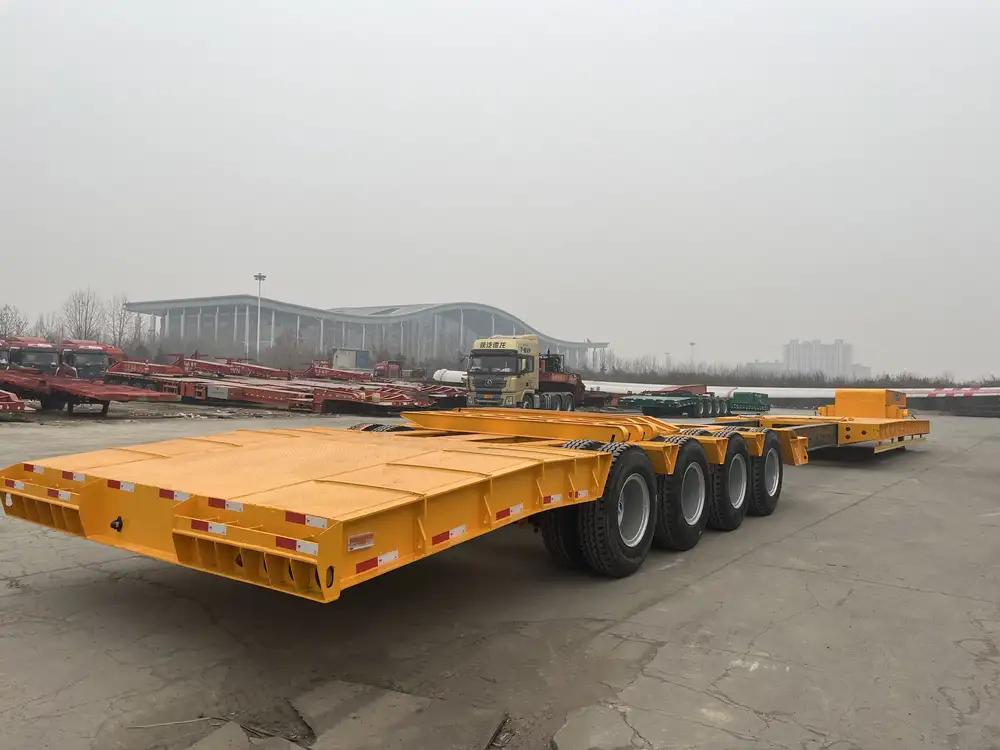When it comes to using an old dump trailer, one of the most crucial components is the manual jack. This mechanism ensures that the trailer remains stable and functional, especially during loading and unloading processes. If you’re experiencing issues with your dump trailer’s manual jack, it’s essential to address these problems promptly to maintain the trailer’s usability and safety. In this guide, we will detail the process of diagnosing and fixing common issues with manual jacks on dump trailers, providing you with the knowledge necessary to make effective repairs.
Understanding the Manual Jack Mechanism
Before delving into repairs, it’s important to understand how a manual jack functions. The manual jack typically features:
- Crank Handle: Used to raise and lower the trailer.
- Jack Screw: Transforms the rotational movement of the crank into linear movement, lifting the trailer.
- Base Plate: Provides stability and a surface to mount the jack.
- Lift Tube: The vertical component that extends and retracts to raise or lower the trailer.
Common Issues with Manual Jacks
Manual jacks can face various issues, which include but are not limited to:
- Jack Won’t Lift: This can be due to a stripped screw or insufficient lubrication.
- Crank Handle Spins Freely: Often caused by wear and tear on internal components.
- Physical Damage: Rust, dents, or bent components can inhibit operation.
- Difficulty Cranking: This may be a sign of a lack of lubrication or misalignment.

Step-by-Step Guide on Fixing Your Manual Jack
1. Safety First: Prepare Your Work Area
The first step in fixing an old dump trailer manual jack is ensuring you have a safe and organized workspace. Here’s how to prepare:
- Park on Level Ground: Confirm that the dump trailer is on stable, level ground to prevent any accidents.
- Use Wheel Chocks: Secure the trailer’s wheels with chocks to avoid rolling during repairs.
- Gather Tools: Collect necessary tools, like wrenches, screwdrivers, a lubricant, and a replacement jack screw if needed.
2. Diagnosing the Problem
Identify which of the common problems listed earlier you are encountering. Here’s how to systematically diagnose the issue:
| Issue | Diagnostic Steps |
|---|---|
| Jack won’t lift | Inspect the screw for stripping and check for lubrication. |
| Crank handle spins freely | Disassemble the crank and examine for worn components. |
| Physical damage | Inspect for rust, bending, and overall structural integrity. |
| Difficulty cranking | Check for misalignment and apply lubricant. |

3. Troubleshooting Solutions
A. If the Jack Won’t Lift
Check for Obstructions: Begin by ensuring there is nothing blocking the jack’s movement.
Inspect the Jack Screw: Look for signs of bending or stripping. If the screw appears damaged, replacement is necessary.
Lubrication: Apply a suitable lubricant on the jack screw and internal components.
Recommended Lubricants:
- White lithium grease
- Silicone spray
Test the Jack: After lubrication, try to operate the jack again. If it remains non-functional, proceed to replace the jack screw.
B. If the Crank Handle Spins Freely
Disassemble the Crank Using a Wrench: This lets you access the internal mechanism. Look for any signs of wear or broken gears.
Replacement of Worn Parts: Identify if parts such as the crank gear or bearings require replacement.
Helpful Tip: Always keep the old parts for comparison when sourcing replacements.
Reassemble and Test: Once the components are replaced, reassemble the crank and test its functionality.

C. Handling Physical Damage
- Inspect and Clean: Use a wire brush to remove rust and clear away dirt or debris.
- Straighten Bent Components: If any part is bent, use a hammer on a flat surface to gently straighten it.
- Apply Rust Inhibitor: After cleaning, protect the jack with a rust inhibitor to prolong longevity.
D. If There’s Difficulty Cranking
- Check Alignment: Ensure that the jack is properly aligned with the trailer. Misalignment can cause excessive friction, making it difficult to operate.
- Reapply Lubricant: Use a sufficient amount of lubricant on all moving parts.
- Adjust Components: Tighten or align any loose bolts creating friction during cranking.
When to Consider Professional Help
While many jack issues can be resolved with DIY fixes, some problems may warrant professional intervention:
- Extensive Rust Damage: If the jack is structurally compromised, it may need complete replacement.
- Wear Beyond Repair: Inspect components to determine if they are beyond economical repair.
- Safety Concerns: If you are unsure about doing the repairs safely, it’s best to consult a professional.

Preventative Maintenance Tips
Once repairs are complete, it’s important to implement a regular maintenance schedule to ensure the manual jack remains functional. Here are some tips:
- Regularly Inspect: Make it a habit to inspect the jack for any signs of wear or damage.
- Lubrication Schedule: Lubricate moving parts every few months or when you notice resistance.
- Clean After Use: Routinely clean the trailer and jack to prevent rust and buildup.
- Store Properly: When not in use, keep the trailer covered to protect it from harsh elements.
Conclusion
Fixing a manual jack on an old dump trailer is a manageable task, provided you follow a systematic approach. Understanding the common issues and employing effective troubleshooting methods will enable you to maximize the lifespan and functionality of your trailer. Regular maintenance and vigilance will ensure your dump trailer remains ready for use at all times, catering to your hauling needs efficiently. By taking proactive steps and staying informed, you can tackle any manual jack issues that arise, creating a safer and more reliable towing experience.



